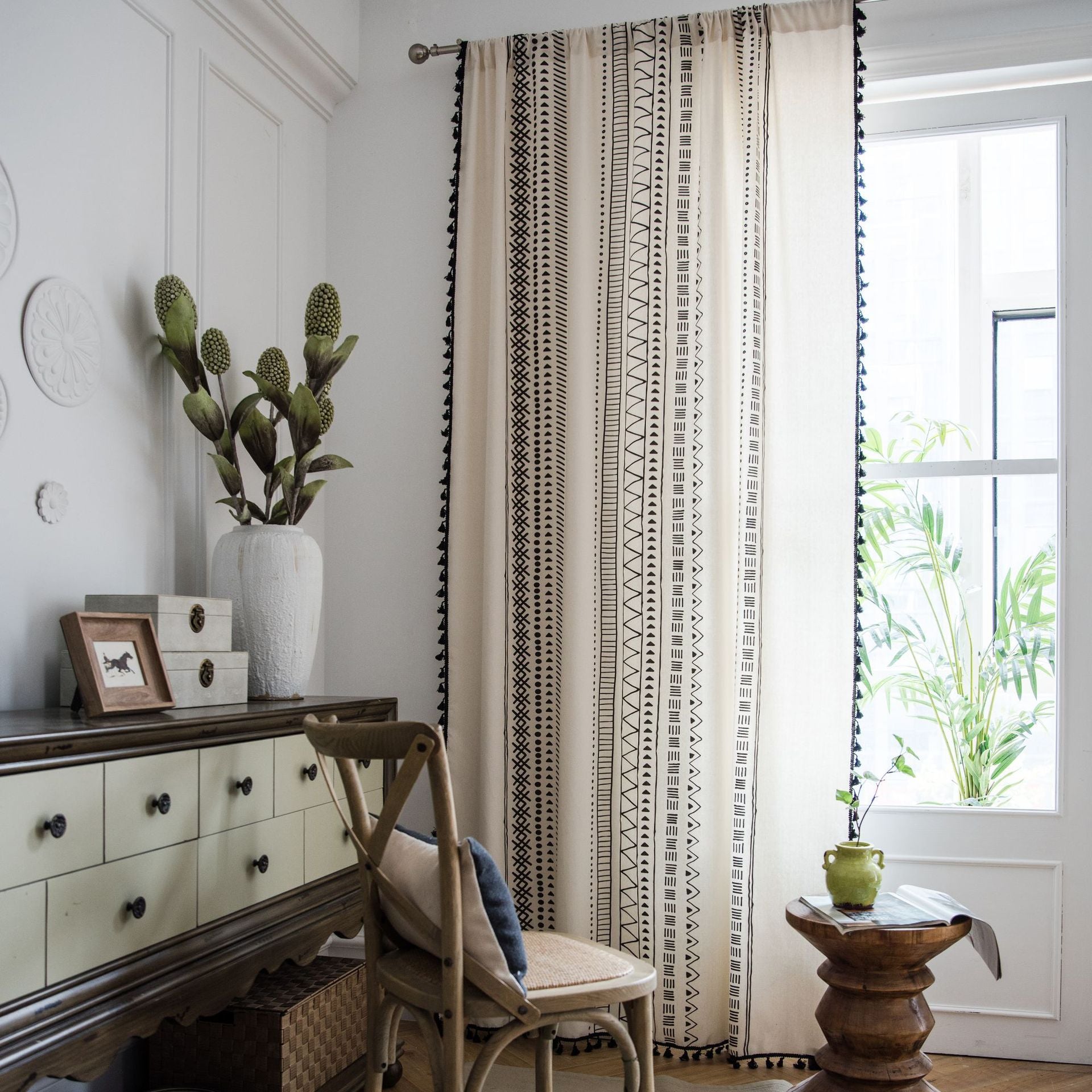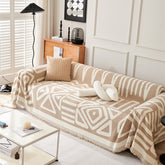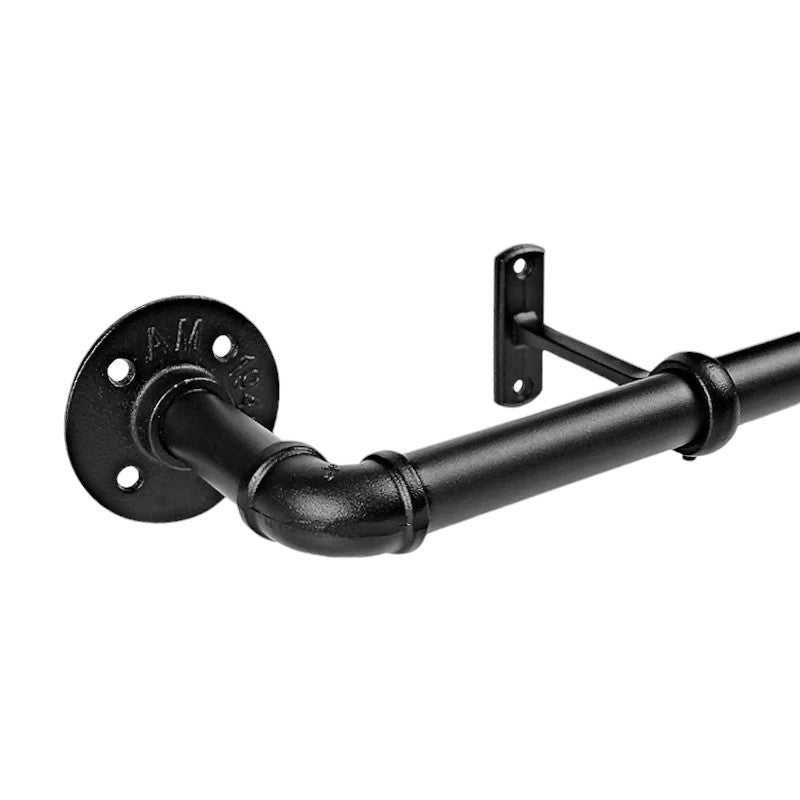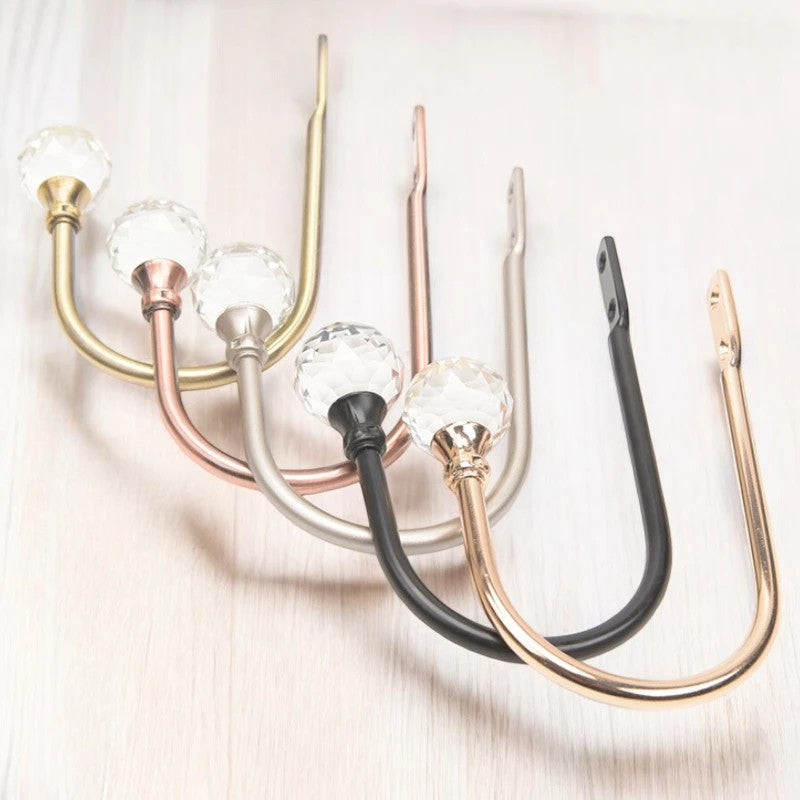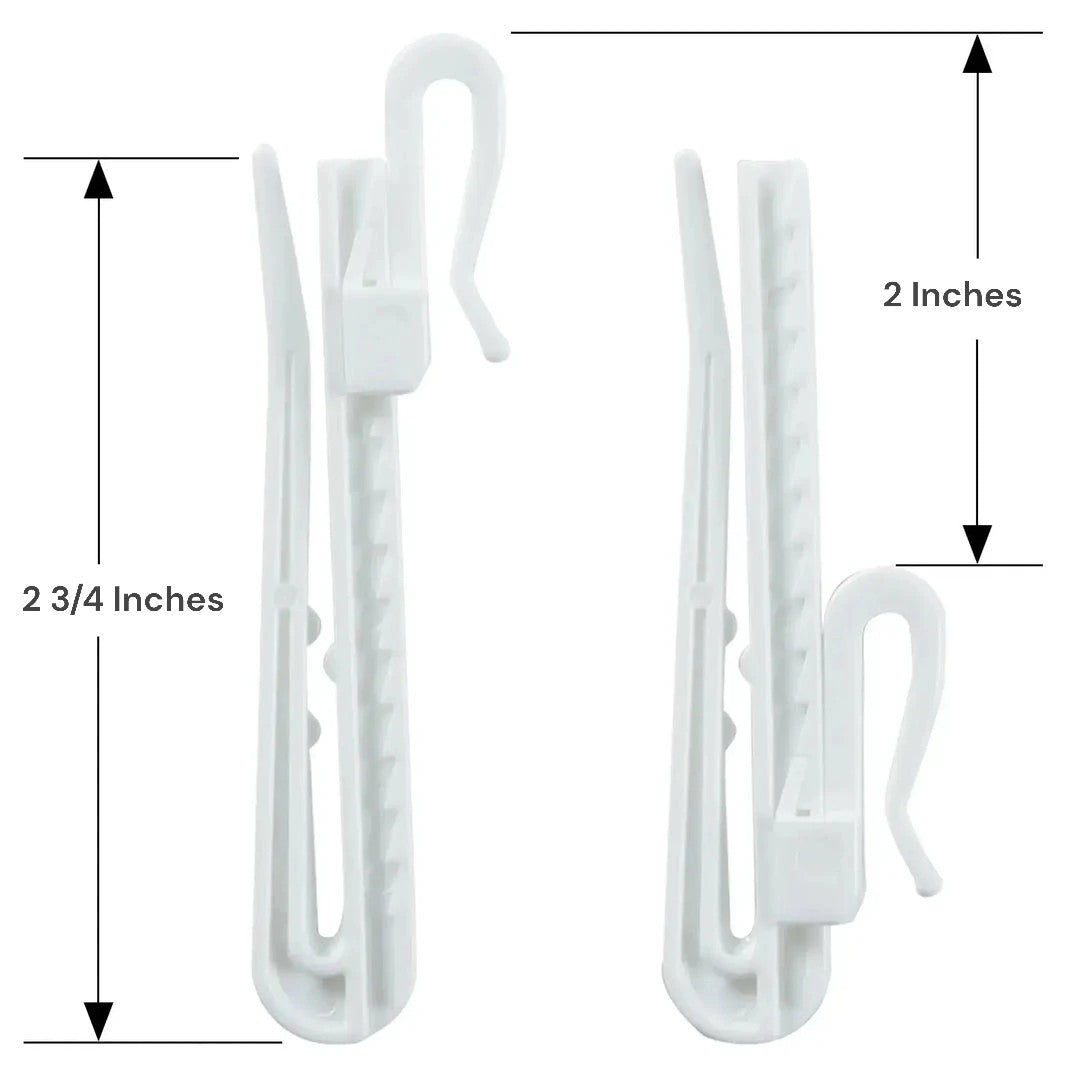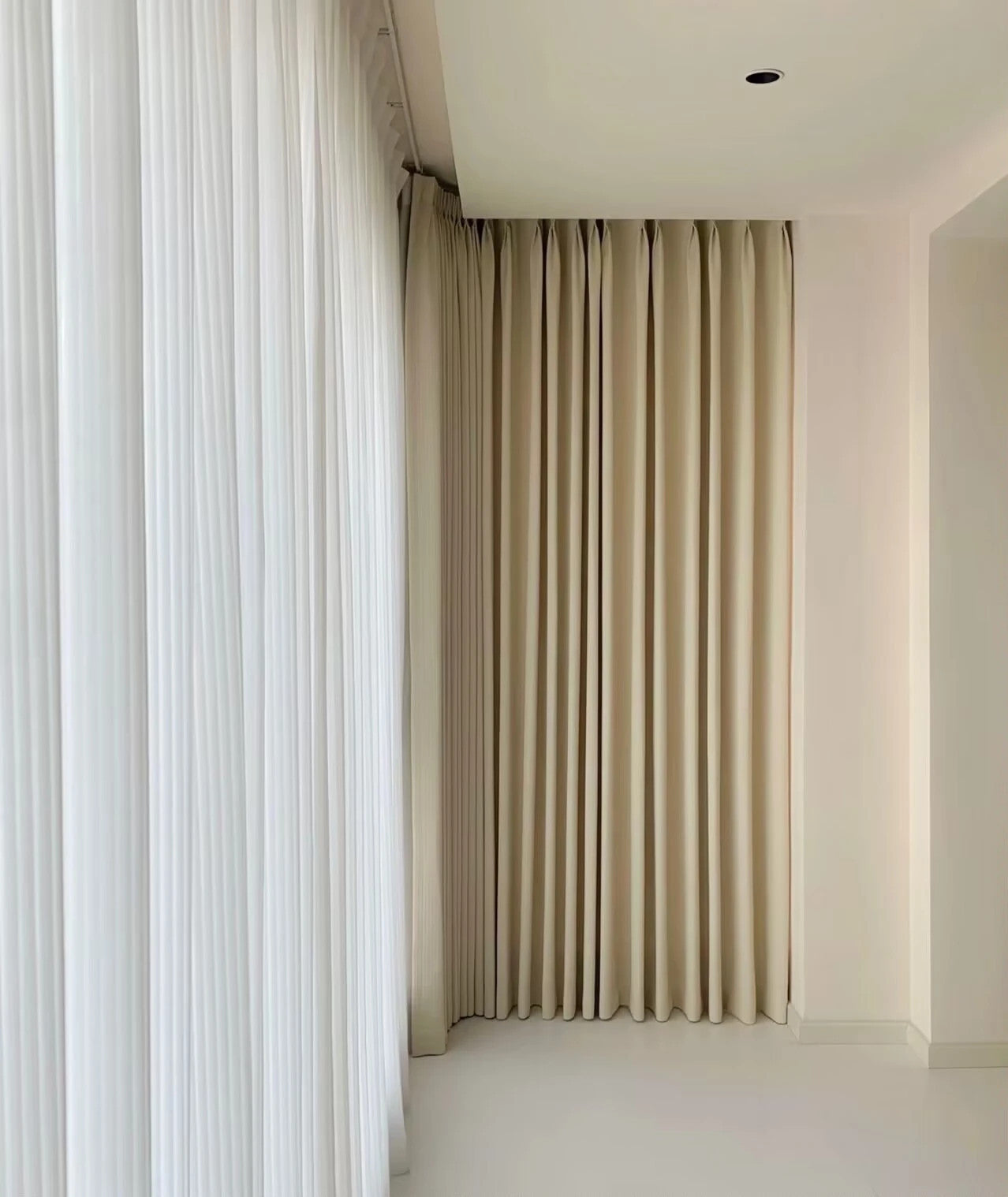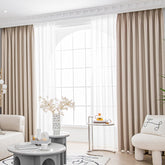Thermal Curtains vs. Window Film: Best Insulator?
Last Update: April 2025
As the owner of Dolcewe.com, I've helped thousands of customers find the best window insulation options. Many homeowners ask me whether thermal curtains or window film works better.
While each option promises to boost a home's energy efficiency and curtail heating and cooling costs, their insulating benefits differ.
I'll guide you through an analysis, peeling back the layers (quite literally) on how these window coverings perform, so fellow homeowners can make an informed decision.
Key Takeaways
| Main Section | Key Takeaway |
|---|---|
| What Are Thermal Curtains? | Thermal curtains with multiple layers can reduce heat loss by up to 25% through windows. For best results, choose custom-sized curtains that cover the entire window frame with no gaps, and close them during the coldest or hottest parts of the day. |
| What Is Window Film? | Window film provides year-round insulation without blocking your view while blocking harmful UV rays that fade furniture. Apply clear film for maximum visibility or tinted film for extra heat blocking in sunny areas. |
| Which Option Insulates Better? | Thermal curtains offer higher insulation power (R-value 3-5) but only work when closed, while window film works constantly with lower insulation (R-value 1-3). Consider using both for maximum energy savings: film works all day, and curtains add extra insulation during extreme temperatures. |
| Cost Comparison | Both options typically pay for themselves within 1-3 years through energy savings of $100-275 annually. Custom thermal curtains starting at $26.99 offer excellent value with minimal installation costs, while window film requires more careful installation but may last longer. |
| How to Install: DIY Tips | Install thermal curtains 4-6 inches wider than your window and mount the rod high enough to prevent heat leakage at the top. For window film, work slowly with soapy water spray and a squeegee, starting from the top and working down to minimize bubbles. |
| Design and Style Impact | Choose from over 200 fabric options to match your decor while adding energy efficiency. Layer sheer curtains under thermal ones for flexibility—keep sheers closed during the day for privacy while still allowing light, then close thermal layers when needed for insulation. |
| Durability and Care | Wash thermal curtains 1-2 times per year and vacuum regularly to maintain insulation properties and extend their 5-10 year lifespan. Clean window film with standard window cleaner but avoid abrasive materials that might scratch the surface, helping it reach its potential 15-year lifespan. |
| Best Choice for Different Homes | Renters should choose thermal curtains for easy installation and removal without permanent changes. Homeowners may benefit from window film for long-term value, or combine both methods for maximum energy efficiency. |
| What's Best for Your Climate? | In cold climates, choose triple-layer thermal curtains and seal any gaps around window frames with weatherstripping. For hot, sunny regions, install reflective window film and add light-colored thermal curtains to maximize heat reflection. |
Benefits of Thermal Curtains

Let's dig into what makes this window solution a smart choice for those looking to battle the elements while enhancing their home's interior.
Understanding Thermal Curtains
When I first considered thermal drapes for my home, I was intrigued by their structure.
Thermal curtains have special layers that block heat transfer through windows. Most have three or four fabric layers in total.
The outer layer looks nice in your room. The middle layers trap air to block heat. The backing often has foam or another heat-blocking material.
The beauty is in their ability to disrupt the heat exchange process, which I've found
Insulation
These curtains create a barrier between your room and the window. They keep warm air inside during winter. In summer, they block hot air from getting in.
Study shows that They can reduce thermal energy loss by approximately 25%. So you can save a lot on your energy bills. Sounds great, right?
Related article - benefits of layered curtains
At Dolcewe.com, we make custom thermal curtains starting at $26.99. You can pick any size to fit your windows perfectly. No gaps means better heat blocking.
How thermal curtains help you:
- Stop cold drafts from windows
- Make rooms feel warmer
- Cut heating and cooling costs
- Reduce noise from outside
- Block light when needed
- Add style to your room
I've sold thermal curtains for over 10 years. Customers tell me their rooms feel warmer right away after hanging them.
Related article - insulated curtains guide
My home is my sanctuary from the noise of the bustling streets. The sound-dampening qualities of thermal curtains add a layer of acoustic tranquility, noticeably muffling the din of daily life—a benefit window film simply cannot provide.
| Feature | Thermal Curtains | Window Film |
|---|---|---|
| Material | Foam layer and metal foil | Thin laminate film |
| Function | Insulate and reflect heat | Reflect harmful UV rays and solar heat |
| Light Control | Complete blackout option available | Reduces glare but allows some light through |
| Privacy | Opaque material ensures privacy | Varies with film type, some visibility is possible |
| Aesthetic Variety | Wide range of textures and designs | Mostly transparent or tinted options |
| Soundproofing | Good sound-dampening properties | Does not insulate sound |
Benefits of Window Film

Window film is a thin sheet that sticks right to your glass. It's made of plastic, usually polyester. The film comes in rolls that you cut to fit. Some films are clear. Others have tints or patterns.
Window film works by changing how heat moves through glass. It bounces heat back to where it came from. In winter, it reflects indoor heat back into your room. In summer, it bounces the sun's heat outside.
You can buy window film at home stores or online. Basic film costs $20-$50 per window. Better films cost more but work better too.
How window film helps you:
- Stays in place all year
- Doesn't block your view (clear films)
- Cuts glare from sunlight
- Blocks UV rays that fade furniture
- Has no moving parts to break
- Works even when curtains are open
Window film is popular in sunny areas. My customers in hot climates often start with film, then add curtains for extra savings.
| Feature | Advantage | Impact |
|---|---|---|
| Energy Efficiency | Reflects solar heat | Reduces energy costs |
| UV Protection | Blocks 99% of UV rays | Protects furnishings and skin |
| Glare Reduction | Minimizes eye discomfort | Enhances screen visibility and comfort |
| Security Enhancement | Forms protective barrier | Improves safety against break-ins and accidents |
| Durability | Resists peeling and discoloration | Ensures longevity of the film |
| Low Maintenance | Easy to clean | Saves time and effort |
Which Option Insulates Better?

Let's compare how well each option keeps your home warm or cool:
| Feature | Thermal Curtains | Window Film |
|---|---|---|
| Insulation power | Higher (R-value 3-5) | Lower (R-value 1-3) |
| Winter heat keeping | Very good | Good |
| Summer heat blocking | Good | Very good |
| Draft stopping | Excellent | Moderate |
| Works when open | No | Yes |
| Temperature feel | Makes room feel cozy | Less noticeable |
R-value shows insulation strength. Higher numbers mean better insulation. Thermal curtains have higher R-values but only work when closed. Window film works all the time but insulates less.
In very cold places, thermal curtains often work better. The thick fabric stops cold air better. In hot, sunny areas, window film might work better. It blocks heat before it enters your home.
Many of my customers use both for the best results. Film works during the day, and curtains add extra help at night.
Cost Comparison: What Will You Spend?
Money matters when making home upgrades. Let's look at what you'll pay:
| Cost Factor | Thermal Curtains | Window Film |
|---|---|---|
| Basic cost | $25-$150 per window | $20-$50 DIY, $50-$200 pro install |
| How hard to install | Easy | Needs careful work |
| Extra items needed | Curtain rod ($15-$40) | Spray bottle, squeegee ($10) |
| How long it lasts | 5-10 years | 5-15 years |
| Energy savings per year | $100-$250 | $100-$275 |
| Pays for itself in | 1-2 years | 1-3 years |
Custom thermal curtains from Dolcewe.com start at just $26.99. This makes them very budget-friendly. We can make any size you need with no waste.
Window film costs about the same but needs more careful setup. Many people mess up the first try. You might need to buy extra film or hire help.
Both options can save enough energy to pay for themselves quickly. Most of my customers see lower bills within a few months.
Design and Style Impact

How will your windows look after adding insulation? Both options change your home's style.
Thermal curtains come in many colors and patterns. At Dolcewe.com, we have over 200 fabric choices. You can match any room style. Curtains add softness and color to rooms. They frame windows nicely.
One customer told me: I love that my curtains save energy AND make my living room look better!

Window film has fewer style options. Clear films are hard to see. Tinted films come in gray, bronze, or silver. Some fancy films look like frosted or stained glass.
Film keeps your view more open. This works well in modern homes that want a clean look.
How to Install: DIY Tips

Putting up thermal curtains is simple. You need a curtain rod and brackets. Many homes already have these in place.
To install thermal curtains:
- Measure your window width
- Add 4-6 inches to each side of your window
- Put up curtain rod 4- 6 inches above window
- Hang curtains on the rod
- Make sure curtains cover window edges
- Close curtains when it's very hot or cold
This takes about 30 minutes per window. Most people can do this with just a screwdriver.
Putting up window film takes more time and care:
To install window film:
- Clean window very well
- Spray window with soapy water
- Cut film a bit bigger than window
- Peel backing off film
- Put film on wet window
- Push out bubbles with squeegee
- Trim extra film with razor
This takes about 1-2 hours per window. Be careful to avoid bubbles. Work slowly for best results.
Which Lasts Longer? Durability and Care

How long will your window insulation last? And how much work is it to keep clean?
Thermal curtains last about 5-10 years with normal use. Wash them once or twice a year to keep them clean. Most can go in your washing machine. Hang to dry or use low heat in the dryer.
Sun can fade curtains over time. Lined curtains resist fading better. Our premium curtains have UV-resistant fabrics that last longer.
Window film typically lasts 5-15 years. Better quality films last longer. Clean it just like regular windows. Use window cleaner and a soft cloth.
Film can sometimes bubble or peel at edges over time. Heat and sun can cause this. High-quality films resist these problems better.
Best Choice for Different Homes
Not every solution works for every home. Here's when each option makes the most sense:

Pick thermal curtains when:
- You want to change your insulation with seasons
- You rent your home and can't change windows
- You want to add style while saving energy
- You need to block noise too
- Your windows have odd shapes
- You want a quick, easy fix

Pick window film when:
- You want year-round insulation
- You don't want to block your view
- You need to protect furniture from sun damage
- You have big windows that need heavy curtains
- You like modern, clean-looking decor
- Your main worry is summer heat
Use both together for maximum savings. Many of my customers do this. Film works during the day. Curtains add extra help at night.
What's Best for Your Climate?
Where you live affects which option works better for your home.
If you live in a cold area: Thermal curtains will likely work better. Their higher insulation value blocks cold better. Consider our triple-layer thermal curtains for maximum warmth.
If you live in a hot, sunny area: Window film might be your better choice. It blocks heat and UV rays directly. Add light-colored curtains for extra cooling.
If you have cold winters AND hot summers: Use both methods together. Install good window film. Add thermal curtains that fully cover window frames. Close curtains at night and during very hot/cold days.
Combining Thermal Curtains and Blackout Window Film

The concept of combining thermal curtains and window film is a game-changer for those pursuing the highest standards in energy efficiency and interior comfort.
My experience as a home efficiency consultant has shown that when these two window coverings work in synergy, they create a formidable barrier against energy loss, bring forth considerable energy-saving benefits, and maintain a comfortable living space year-round.
Advantages of using both treatments together
Incorporating both blackout curtains and window film into your home can lead to unparalleled optimal thermal insulation.
During peak sunlight hours, the film reduces heat entry, while at twilight, curtains add an extra layer of insulation. This potent combo extends beyond mere functionality, also enhancing the aesthetic appeal of any room.
It's a powerhouse duo that caters to both practical needs and sophisticated design integration.
How to integrate both optimal energy efficiency and design
To achieve maximal benefits, I recommend applying combined window treatments according to their complementary strengths.
Window film should be the first line of defense against the sun's rays, applied directly to the glass.
The thermal curtains serve as the second, adaptable layer that can be adjusted as the day progresses.
- Install reflective window film to combat daytime heat and glare.
- Choose thermal curtains with a design that complements your interior decor.
- During cooler months, open the curtains during the day to allow natural light and warmth.
- At night, draw the curtains to guard against the chill and ensure complete privacy.
Remember, personal preference plays a pivotal role; the fusion of energy-saving prowess with design should reflect your unique taste.
Create a space that not only performs energetically but also feels like your personal haven of comfort and style.
| Time of Day | Window Film Function | Thermal Curtain Function |
|---|---|---|
| Morning to Afternoon | Reduces solar heat gain | Drawn back to allow natural light |
| Evening to Night | Continues to insulate | Drawn closed to add insulation and ensure privacy |
Incorporating these strategies into your home will harmonize energy efficiency with interior comfort, providing a serene, cost-effective living environment.
I've observed many homeowners revel in the added coziness and decreased utility bills that such a comprehensive approach can deliver.
Shop the Best Thermal Curtains at Dolcewe
As the proprietor of Dolcewe.com, with a decade's experience enhancing home comfort and style, I'm excited to guide homeowners to their ideal window dressing solutions.
My dedicated pursuit to outfit your windows has culminated in a selection precisely tailored to boost both your home's energy efficiency and its aesthetic appeal.
At Dolcewe, custom-size curtains are designed to dovetail perfectly with your living space, ensuring not a single draft disrupts your cozy abode.
Available in Various Styles, Fabrics & Colors
Understanding the diverse tastes and design directions of homeowners is at the heart of Dolcewe's philosophy.
That's why our curtain store is stocked with an eclectic array of thermal curtains—whether you seek the plush elegance of velvet, the sleek sophistication of linen, or the utter blackout for a restful sleep.
Our palette spans a rainbow of hues and a tapestry of patterns, empowering you to inject personality into every room.
Custom Size for a perfect fit
Custom window solutions are more than a luxury—they're a necessity for preventing thermal energy loss and maximizing insulating window treatments. That's why each curtain is crafted to your specifications, ensuring a snug fit that leaves cold drafts and uninvited sunshine outside where they belong.
With our tailored window covering, savvy homeowners can relish in a home that not only reflects their decor style but also champions environmental responsibility and energy conservation.
Frequently Asked Questions (FAQs)
1. What are the advantages of using blinds or curtains?
Using blinds or curtains has several advantages. Blinds are better than curtains in controlling light and privacy, while curtains add decorative value to a room.
2. How to choose between blinds and curtains?
Choosing between blinds and curtains depends on your preference for light control, privacy, and aesthetic appeal. While blinds are better than curtains in blocking direct sunlight, curtains offer a traditional, decorative touch to a room.
3. Are blackout curtains and window film better than blinds?
When it comes to blocking light, blackout curtains and window film have advantages over blinds. Blinds may not completely block out light, while blackout curtains and window film can effectively prevent light from coming through the window.
4. What are the reasons why window film is a popular choice for homeowners?
Window film is a popular choice for homeowners due to its versatility. It can serve as a decorative and privacy-enhancing solution while blocking direct sunlight, making it an ideal option for various window treatment needs.
5. Are there advantages that window blinds and curtains share?
Window blinds and curtains also have shared advantages. Both can enhance the aesthetic appeal of a room, provide privacy, and offer options for light control.
6. How do traditional curtains differ from decorative window films?
Traditional curtains add a classic touch to a room, while decorative window films provide versatility in enhancing the window's appearance with various designs and patterns. Each option offers unique benefits based on the homeowner's preferences.
7. What are the advantages of using window film over curtains and blinds?
Window film blocks light and offers privacy without completely covering the window like curtains and blinds do. It is also decorative and can insulate the window without blocking the view.
8. Are blackout curtains and blackout blinds effective for blocking light?
Blackout curtains and blinds are made of tightly woven or layered fabrics that block light effectively, offering complete darkness and enhancing privacy.
9. How do traditional curtains compare to window film in terms of functionality?
Traditional curtains offer limited options for privacy and blocking light, while window film provides versatile solutions with various levels of privacy and light control.
10. Can curtains help insulate the window effectively?
Curtains can help insulate the window and reduce heat loss during the colder months, improving energy efficiency in the home.

